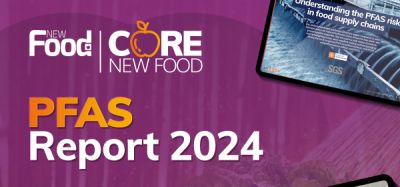Using recycled cardboard in food packaging risks contaminating food with mineral oils
- Like
- Digg
- Del
- Tumblr
- VKontakte
- Buffer
- Love This
- Odnoklassniki
- Meneame
- Blogger
- Amazon
- Yahoo Mail
- Gmail
- AOL
- Newsvine
- HackerNews
- Evernote
- MySpace
- Mail.ru
- Viadeo
- Line
- Comments
- Yummly
- SMS
- Viber
- Telegram
- Subscribe
- Skype
- Facebook Messenger
- Kakao
- LiveJournal
- Yammer
- Edgar
- Fintel
- Mix
- Instapaper
- Copy Link
Posted: 15 June 2011 | John Wiley & Sons, Inc. | No comments yet
It may contaminate food even if the recycled cardboard is used…


Harmful mineral oils from the printing inks used on cardboard can migrate into food if recycled cardboard is used for food packaging. It may contaminate food even if the recycled cardboard is used for the corrugated card transport box that holds individual packs. In tests on experimental packs of fine noodles, researchers in Zurich, Switzerland, found that food rapidly absorbed 10 times the recommended limit for concentration of these contaminating oils from the transport box. The findings were published in the latest edition of Packaging Technology and Science.
The world-recognised limit for these oils is 0.6mg in each kg of food, but researchers discovered that after standing in packaging for just six weeks, food could contain 6.1mg/kg. And this was in food that had a two-year shelf life, so it is quite possible the value could increase further over time.
Many dry foods such as rice, noodles, breadcrumbs, cornflakes and muesli are sold in paperboard boxes, where the recommended limit may be exceeded over 100 times. Even more foods are stored and transported in larger boxes largely consisting of recycled paperboard. The research showed that even if the food was contained in clean paperboard boxes from fresh fibres, printed with inks free of mineral oil and wrapped into a polyethylene film (also free of mineral oil); mineral oils from the corrugated card transport box far exceeded the limit.
“There is a tension between the need to recycle paper and board and the need to keep food free from high levels of these mineral oils,” says Dr. Koni Grob, an analytical chemist who headed the research team based at the Official Food Control and points out that none of the three presently discussed solutions are easy to put into practice.
The first approach could be to use paperboard made by recycling carefully selected, cleaner starting materials. But when the team ran tests using board with a mineral oil concentration approximately 5 times lower than usual (apparently the best feasible), the mineral oil migration into the food still exceeded the limit about 7 times. “It is unlikely that the target can be reached by this approach,” says Grob.
Secondly, manufacturers could use new wood fibres when making food packaging and transport boxes. “This change would be difficult for two reasons. Firstly you can’t work fresh fibres on the same machines you use for recycled fibres, and at the moment there is no machinery to produce the enormous extra amounts of fresh fibre paperboard required to replace the recycled board. Secondly, it would trigger a massive increase in the demand for wood to supply them. All the wood growing in Switzerland would not be sufficient to supply Europe with the extra amount needed – and Switzerland is well covered by forests,” says Dr. Grob.
Thirdly, manufactures could introduce functional barriers against the migration of mineral oil, either as internal bags or lining the boxes with materials such as special plastics. This might be the way to go, but the technology is not ready and the recyclability of lined paperboard needs to be tested.
Many companies have realised the problem and recently some have changed their packaging materials to fresh fibre paperboard printed with inks free of mineral oil. “But they are still using recycled card in the corrugated board transport boxes which renders their efforts fruitless,” says Dr. Grob. “In terms of amounts of food packaging material involved, this problem exceeds all those experienced in the past. It needs to be addressed with corresponding care.”







